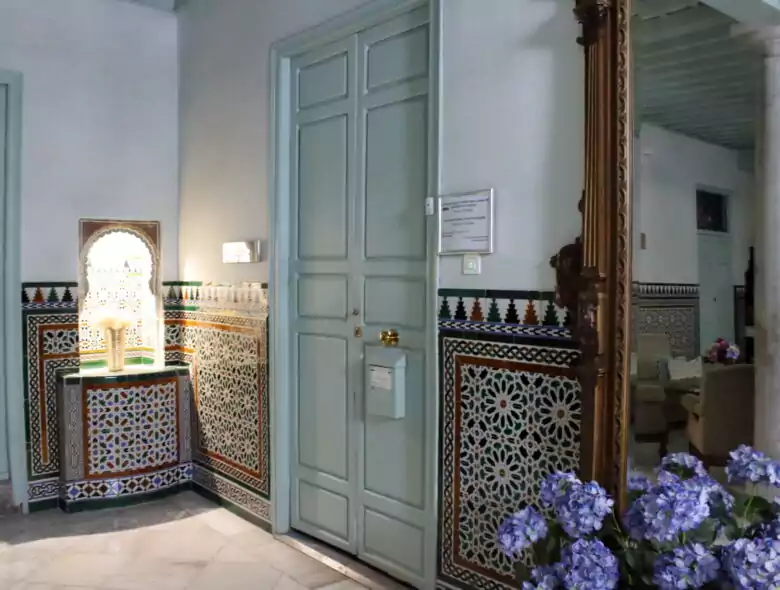If you’re looking for a change in your home and you want something a little bit unique, Spanish Revival interior design may be exactly the look you’ve been searching for! With natural materials, earthy colors, and antique furniture, there is a lot of common ground with Japanese aesthetics. This means that the elements of Spanish Revival interior design work well in Japanese homes, complementing the architecture and materials already used.
However, there are also a lot of elements to Spanish Revival interior design that differ from traditional Japanese design, such as soft arches and natural shapes, as well as the use of ornaments and patterns. These can make beautiful statements in your home and can add a lot of character to your Village House home.
Earthy Colors
Terracotta, burnt orange, mustard yellow, brown. These earthy colors are the most prominent colors of Spanish Revival interior design. They work well alongside creams and whites, as well as with natural materials such as wood and stone. Though earthy colors are the main palette of Spanish Revival interior design, any neutral colors or even colors found in nature such as tree green and sea blue will work to channel the style.
These colors can be incorporated into your rental home through furniture, such as a terracotta armchair, or a mustard yellow lamp. Functional furniture and decor are a big part of the Spanish style, so you could also ensure things like your dishes and cups fit the Spanish revival style by using burnt orange and neutral-colored handmade crockery with soft natural shapes.
Antique Furniture
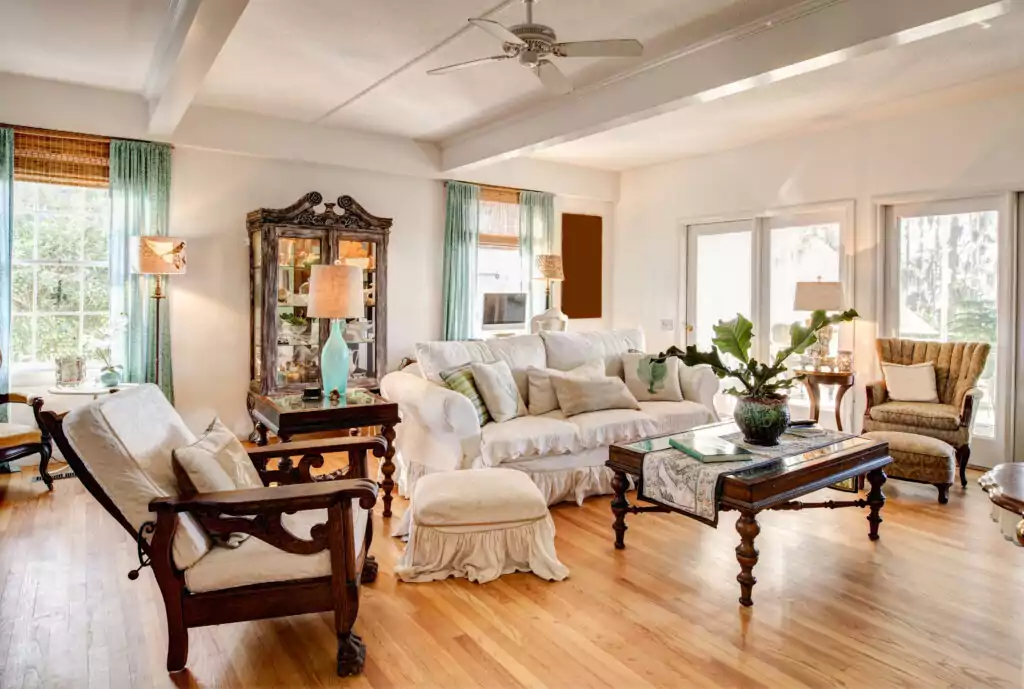
Antique furniture from Spain is often made from dark wood and can be quite grandiose. They work best as a statement piece of furniture within a Japanese apartment. Some examples may be a statement antique furniture coffee table, dining table, or chairs. Perhaps a set of shelves or wardrobe would suit your home best.
Spanish revival antique furniture may be hard to find in furniture and antique shops in Japan. Instead, try looking online at some Spanish antique furniture for inspiration and keeping an eye out in shops for anything that shares some of these features. Meguro-Dori is Tokyo’s best spot for antique furniture and it’s worth a visit just to take in some more inspiration. Antique furniture can be pricey however, so you may want to look for alternatives in secondhand shops and more affordable furniture stores such as Ikea and Nitori.
Vintage Fabric Patterns
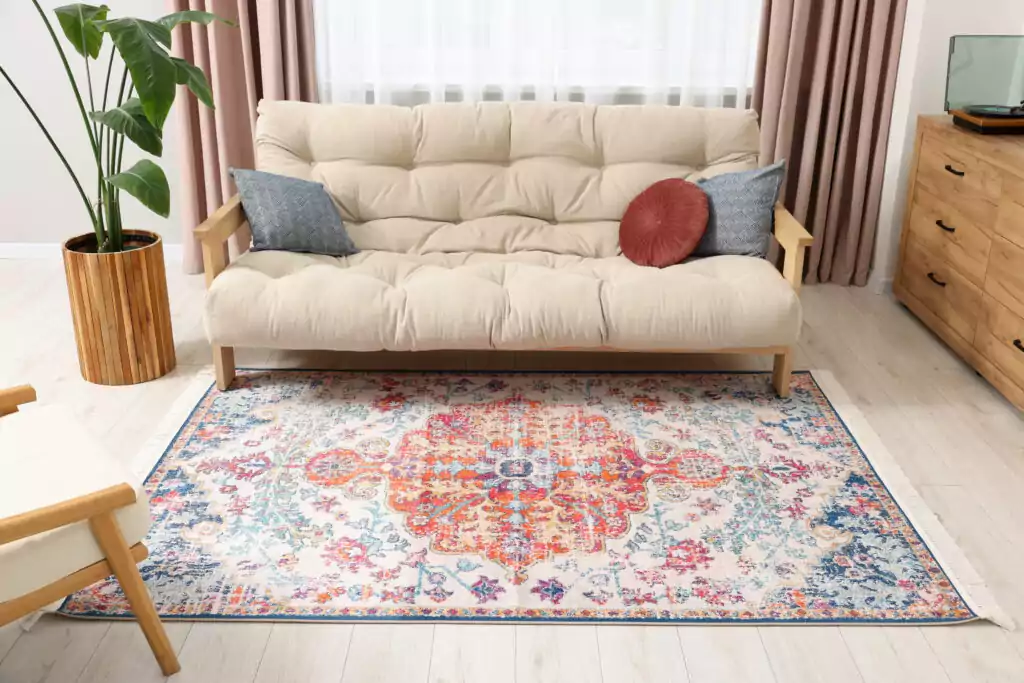
Patterns play a large part in Spanish Revival interior design, whether it’s vintage fabric patterns, Moorish patterned tiles, or patterns in stained glass.
A rug is a great way to incorporate some vintage fabric patterns without cluttering your apartment since it is still a functional piece of furniture. You can also find cushions and blankets with beautiful vintage Spanish patterns. Before going furniture shopping, check out images of vintage Spanish patterns for inspiration; they are often floral or geometric repetitive patterns and can feature very ornate details. You can then look out for similar fabrics in your local furniture and homeware shops.
For a more subtle look, you could use antique lace, where the focus is more on textural patterns rather than colorful patterns. Antique lace could be incorporated into curtains or a tablecloth.
Tiles
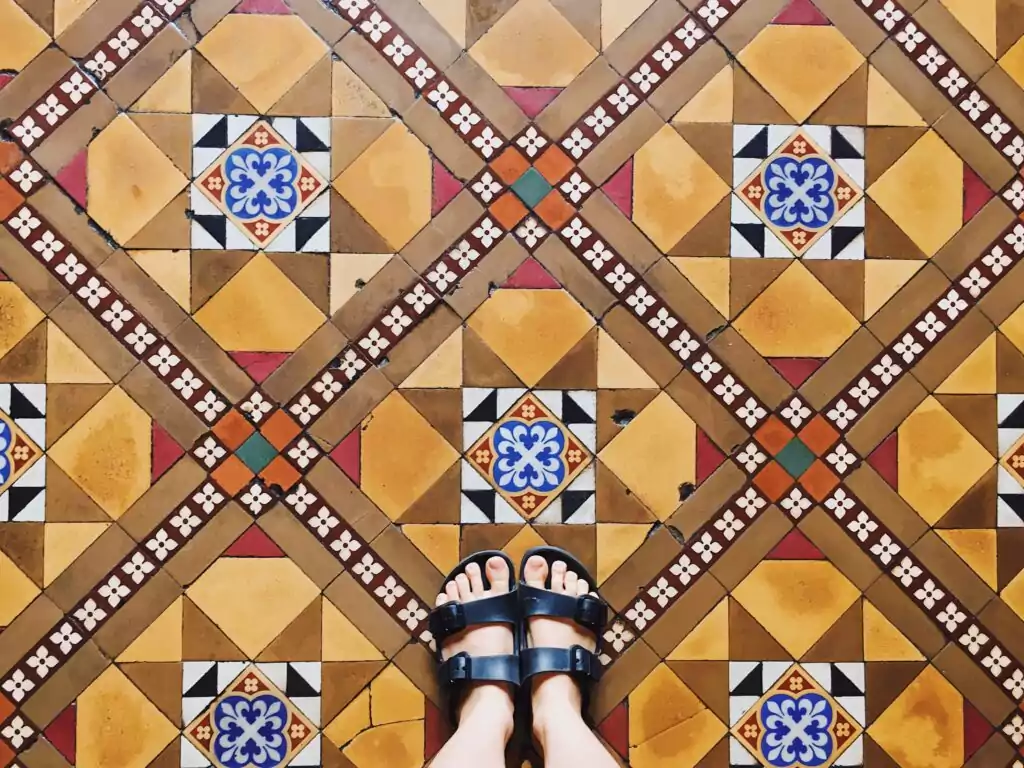
Painted and patterned tiles are one of the most iconic features of Spanish Revival interior design. From staircases to floors, to kitchens and bathrooms, they turn a spot into one of the main features of a home. You can either look for geometric patterned tiles, or floral tiles or go for a more neutral terracotta tile.
You may be thinking that you can’t use tiles in a rental home, however, these don’t need to be permanently adhered to the walls or floors. Instead, try and get creative. Perhaps you could make a DIY tile feature like a mirror, lamp, or table by purchasing lots of small tiles and sticking them to a piece of furniture.
Alternatively, there are peel-and-stick tile stickers available at furniture and home decor stores. These stickers that look like tiles could be used for a kitchen backsplash in the bathroom or elsewhere in the house. However, check that the stickers are actually removable ones, and be careful to stick them to a surface that they can be removed from without any damage!
Ornaments
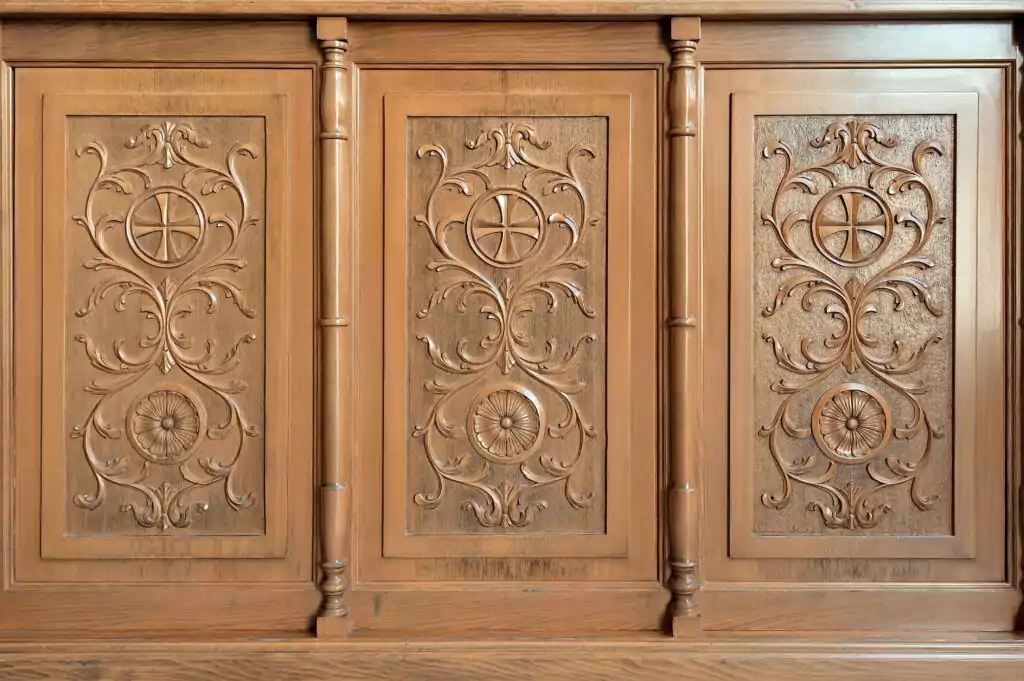
The Catholic religion had a big influence in Spain and therefore in Spanish Revival Interior Design, it’s known to be grandiose and highly ornamental. One of the most popular ornaments of the Spanish Revival interior design style is ceramics. Spain has a long history of making pottery which is reflected in its interior design. Similarly, Japan has a unique history with ceramics, so pop into your local secondhand store or go to a craft market or local ceramicist to find some beautiful new ceramics to decorate your home with.
Ceramics, although beautiful, are also usually very functional, so you can decorate your home with these instead of filling your home with clutter. Make use of any open shelves in your home or surfaces that you can use to display your ceramic ornaments.
These are just some of the ways that Spanish Revival interior design can be incorporated into your home. Scandinavian interior design and traditional Japanese aesthetics are so popular at the moment, not only in Japan, but in various other places across the world. Check out our article on Japandi interior design to find out how these influences blend and to consider other styles of interior design you may want to explore for your Village House home!
Related articles:
- 5-Step Guide to Modern Scandinavian Interior Design
- How to Incorporate Nordic Interior Design into Your Home
- How to Add Color to Rental Apartments
- A Beginner’s Guide to Secondhand Shopping for Your Home
- What are the Basics of Creating a Beautiful Room? Top 5 Tips!


